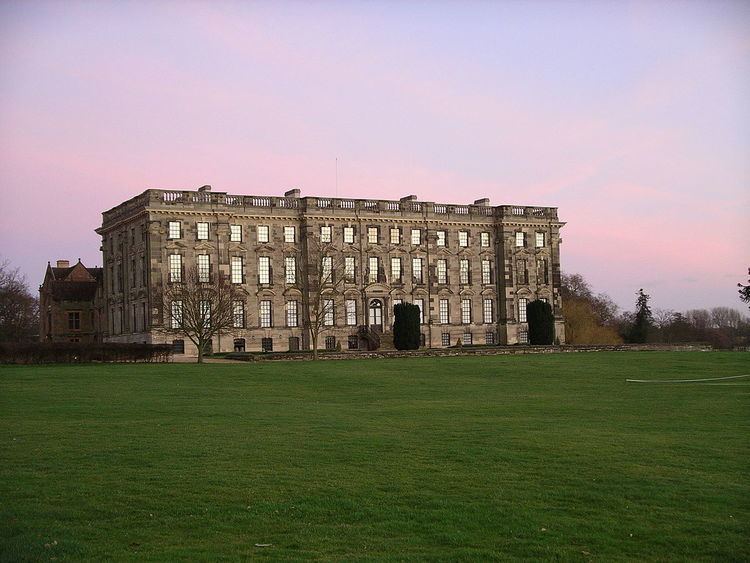Opened 1154 | Phone +44 1926 858585 | |
 | ||
Hours Open today · 11AM–5PMTuesday11AM–5PMWednesday11AM–5PMThursday11AM–5PMFridayClosedSaturdayClosedSunday11AM–5PMMonday11AM–5PMSuggest an edit Similar Lord Leycester Hospital, Charlecote Park, Kenilworth Castle, Abbey Fields, Royal Pump Rooms | ||
Stoneleigh Abbey is a large country mansion situated to the southwest of the village of Stoneleigh, Warwickshire, England. It is a Grade I listed building.
Contents
Sairah tariq stoneleigh abbey aerial teaser
History
The Abbey was founded by the Cistercians in 1154, but very little trace remains of the original Abbey buildings except for the 14th-century Gatehouse.
After the Dissolution of the Monasteries the estate was acquired by Sir Thomas Leigh, Lord Mayor of London in 1558, and a house was built ( which now forms the north and west wings of the present house) on the site of the monastic buildings. It was the home of the Leigh family from 1561 to 1990.
Between 1714 and 1726 a new palatial four-storey fifteen-bay west wing was built to designs by architect Francis Smith of Warwick and provides an impressive range of state apartments.
The view over the River Avon we can see some of the changes instated by Humphry Repton. During his time he was well known for his works at several large country houses. Jane Austen writes of Repton as the gardener making changes to the grounds at the fictional Sotherton Court in Mansfield Park. When he undertook the works at Stoneleigh, he hoped to create an arcade this side of the house overlooking the river. That never came into fruition, however he did redirect the river (Avon) and flood a section of the river to create a mirror lake. When viewed from a raised platform of ground across the river, the house would be perfectly reflected in the surface of the water. There were two small parterres in front of this side of the house where the grass is now, along with other features of the grounds that can be viewed by walking along the paths (wilderness, mill bridge, weyrs, etc.)
The adjacent stables and riding school block and the conservatory are separately listed as Grade II*.
Up until the early 1800s, this side of the house would have looked out on a yard with sheds, pigsties, and other ‘unsightly’ outbuildings. It was during this time that considerations for the health of residents saw the outbuildings move away from the house. This opened up a good view from the new West Wing, and allowed space for the creation of a cricket pitch. William Henry Leigh’s second son Edward Chandos was an avid cricket player, and was delighted when his father allowed for the pitch to be built. It is said that Lord Leigh would give a silver sixpence to any boy who could break a window of the house with a ball. It is still used today by Stoneleigh Cricket club and has been voted the most beautiful cricket pitch in England by Wisden.
Regency Scandals
In 2016, Judy Stove, an Australian researcher into the life and times of Jane Austen, published a book (The Missing Monument Murders, Waterside Press) which investigates a series of scandals at Stoneleigh Abbey in the first half of the nineteenth century. Inheritance contests led to claims about the removal of monuments from Stoneleigh village church, and it was even alleged that a number of witnesses might have been murdered in the period 1812-1815 – within the lifetime of Jane Austen herself. In 1848, Austen’s relative Chandos, first Lord Leigh of the second creation (1791-1850), a Romantic poet and Whig essayist, was charged with two of the murders.
Stove examines court transcripts and newspaper accounts from the time, which named the bridge, designed by Scottish engineer John Rennie (1761-1821) and built over the river Avon west of Stoneleigh Abbey, as the possible site of the murder of the workmen. The Rennie bridge still forms the main approach for visitors to Stoneleigh Abbey.
Recent times
In 1996 Lord Leigh transferred the ownership of Stoneleigh Abbey and its 690-acre (279 ha) grounds to a charitable trust, and then between 1996 and 2000 it was extensively renovated with the help of grants including a £7.3 million grant from the Heritage Lottery Fund and additional grants of more than £3 million from English Heritage fund and the European Union. The upstairs floors were converted into flats by Kit Martin. The property is open to the public with general history tours and a Jane Austen tour which explains her connection to the house and the Leigh family.
In the early 2000s Charles Church built two groups of houses in the grounds of Stoneleigh Abbey, named The Cunnery and Grovehurst Park.
Controversy
The money received by the trust was a subject on The Mark Thomas Comedy Product, which proved that some of the trust's debts were paid using the National Lottery money as well as paying for private development.
